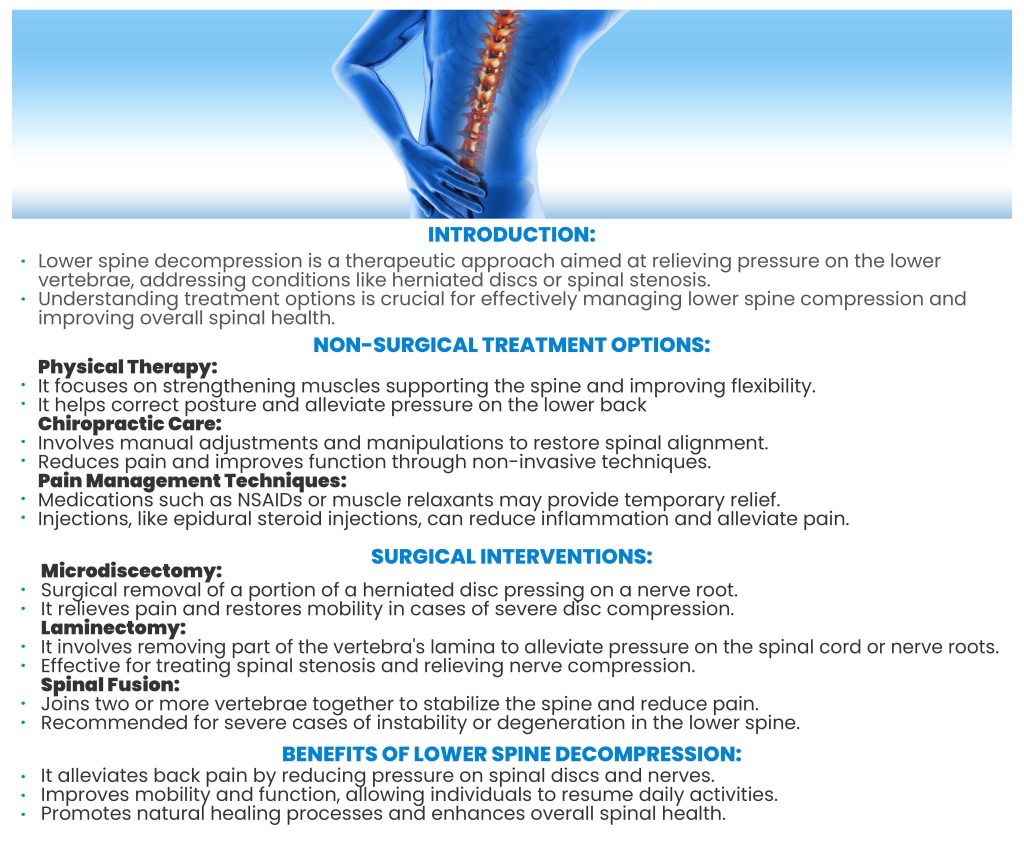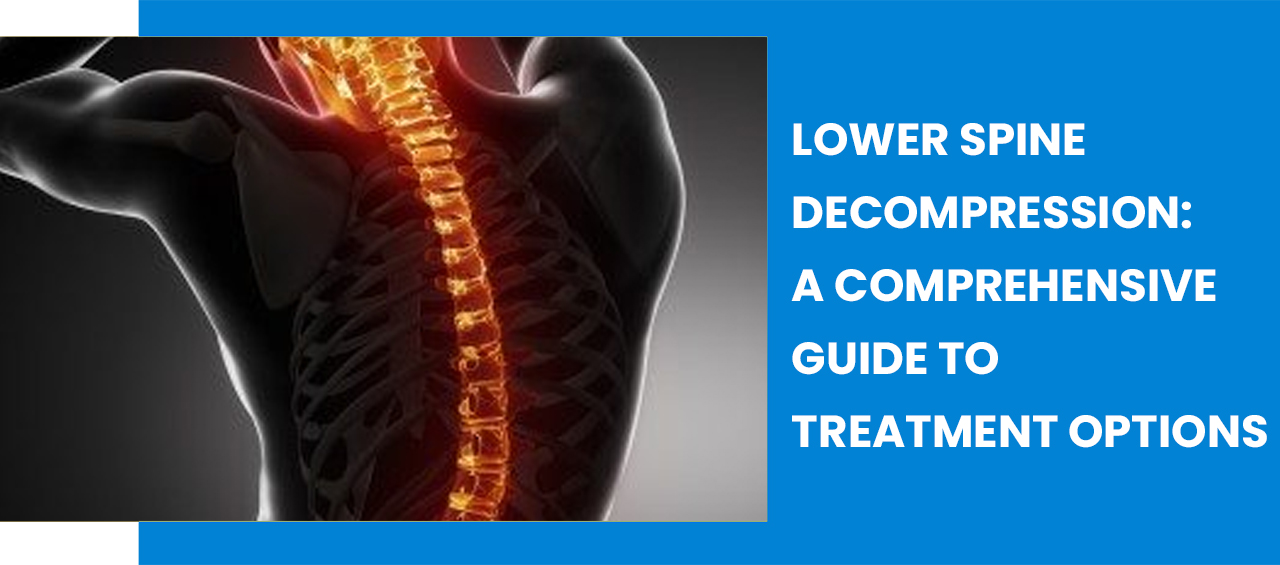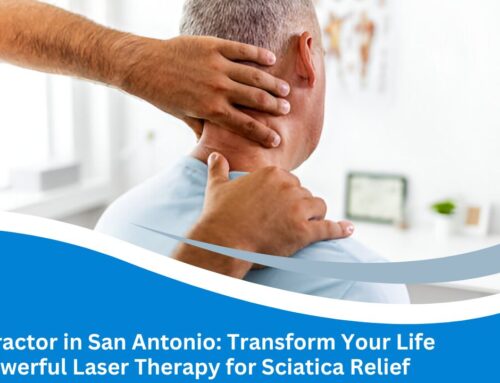
Conclusion:
In conclusion, lower spine decompression is a multifaceted process that encompasses various treatment options aimed at alleviating pressure and restoring functionality to the lower vertebrae. This comprehensive guide has explored both non-surgical and surgical interventions available for individuals grappling with lower spine decompression, underscoring the significance of informed decision-making in managing this condition effectively.
Non-surgical approaches, including physical therapy, chiropractic care, and pain management techniques, offer conservative methods for addressing lower spine decompression. Physical therapy focuses on strengthening muscles, improving flexibility, and correcting posture to mitigate pressure on the lower back. Chiropractic care employs manual adjustments and manipulations to realign the spine, thereby reducing pain and improving overall spinal health. Pain management techniques, such as medication and injections, provide temporary relief by targeting inflammation and discomfort associated with lower spine compression.
Alternatively, surgical interventions may be necessary for individuals with severe or persistent symptoms. Microdiscectomy involves the surgical removal of herniated disc material pressing on nerve roots, whereas laminectomy aims to alleviate pressure on the spinal cord or nerve roots by removing part of the vertebrae’s lamina. Spinal fusion joins two or more vertebrae together to stabilize the spine and reduce pain, especially in cases of instability or degeneration.
The benefits of spine decompression are manifold. By alleviating pressure on spinal discs and nerves, these treatments can significantly reduce back pain, improve mobility, and enhance overall quality of life. Moreover, by promoting natural healing processes and restoring proper spinal alignment, decompression therapies facilitate long-term relief and prevent the recurrence of symptoms.
However, it’s essential to recognize that each individual’s condition is unique, and treatment outcomes may vary. Consulting with a qualified healthcare professional is paramount in determining the most suitable treatment approach based on the severity of symptoms, underlying causes, and overall health status. Furthermore, patients should actively participate in their treatment journey by adhering to prescribed exercises, lifestyle modifications, and follow-up appointments to optimize results and maintain spinal health.
In essence, best spinal decompression offers hope and relief to individuals suffering from the debilitating effects of lower spine compression. By understanding and exploring the diverse treatment options available, individuals can take proactive steps toward reclaiming their health, mobility, and overall well-being.










